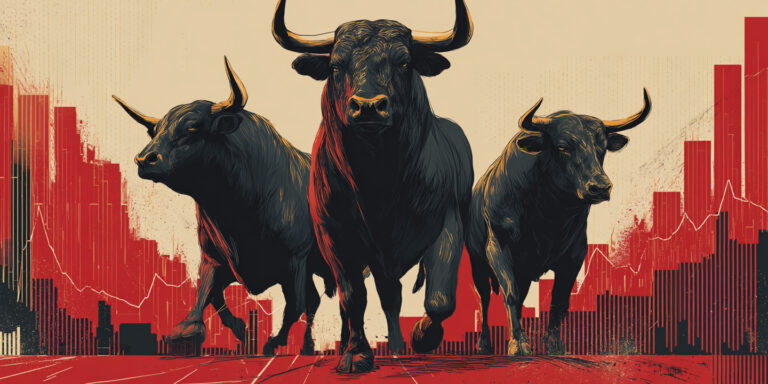Part 3 of 3: Adjusting Your Sails to Navigate Today’s Choppy Waters

For the last installment in this series, I want to return to that moment on the sailboat, the first time I found myself caught by the ferocious wind, the roller coaster waves I didn’t know how to crest. In that moment, when you’re faced with a new and seemingly insurmountable challenge, it’s easy to think: I’m not ready. I can’t make it. And in a way, it’s true. Because you can never really be ready. And you can’t make it until you do make it. The best you can do is prepare for the worst, adjust to your reality, assemble the best crew, and get ready for what’s on the horizon.
In part 1 of this series, I outlined five strategies for navigating today’s stormy seas. In part 2, we talked about the importance of caring for your crew and bringing them along for the ride. Now, I want to share my thoughts about what’s to come when we emerge from the storm, and why I think we can be optimistic about what’s on the horizon.
Dying Tailwinds, New Horizons
Right now we are at an inflection point, in more ways than one. As John Luttig of Founders Fund wrote in a recent article, this crisis comes at a time when certain tailwinds are starting to vanish. Over the last twenty years, companies have benefited from the massive tailwinds of the Internet boom and captured opportunities with high margins and low operational complexity — including search engines, social networks, and CRM, among others. While I agree that certain waves of momentum are starting to peter out, I disagree that growth from here on out is a zero-sum game. The next waves are starting to build. To quote William Gibson, “The future is here — it’s just not evenly distributed.”
Today’s crisis provides some clues about what’s to come. Commerce has progressed more in the past two months than in the previous two decades. In the next decade, we will see long overdue technology-led reinventions of healthcare, financial services, and industry. Meanwhile, cord-cutting and streaming have accelerated even faster than commerce. In my house, it’s a daily occurrence to see my own kids consume YouTube videos, TikToks, and Netflix documentaries — while simultaneously playing Fortnite or Minecraft. Elsewhere on the Internet, the acute need to reinvent media and verify facts that potentially undermine liberal democracies is crystal clear.
During my time at Google [X], I was inspired to work with original thinkers and unapologetic weirdos that imagined things that didn’t seem possible — groups of passionate, talented people who threw themselves at some of the world’s biggest problems. Although it’s fun to chuckle at those that dare to dream the impossible, I believe it’s time to stop rolling our eyes at these builders — and find and fund more of them.
During this crisis, we’ve seen first-hand how broken and inadequate many aspects of our world really are. And these problems must be addressed. I believe that in the aftermath of COVID-19, we’ll see a Cambrian explosion of innovation.
’s nails it with his instant classic It’s Time to Build. Learning from our experiences, we will set out to rebuild things in radically better ways, rather than attempting to recreate the past.
A Time to Build
This new “time to build” will require a different mindset, different talent, and a different form of capital. Tomorrow’s entrepreneurs will take audacious approaches to find breakthrough solutions to enormous societal problems, rather than trivial extensions or copycats. The most interesting breakthroughs will come from those who bring a fresh perspective from outside an industry and assemble cross-disciplinary teams to tackle problems without the baggage of old assumptions.
Tomorrow’s companies will benefit from the leadership of seasoned founders — founders who have seen adversity and have the internal fortitude and resolve to bounce back. These entrepreneurs know when to stick to long-term vision, adjust, and solve the real problem at hand.
And founders are already doing this.
is building a company called Honor to tackle in-home care for seniors, families, and caregivers.
is building Virta Health, to safely and sustainably reverse type 2 diabetes. And
is building Forward to reshape the doctor’s office of the future through preventative medicine. In tackling these kinds of issues, investors will have to remain patient and plan to invest in the long term, over multiple rounds.
Rise of the Operator-Investor
When ships come to call at ports throughout SF Bay, by law they’re required to bring on board an expert in the Bay’s underwater topography — someone who knows the hidden shoals and narrow channels, who constantly checks for changing currents. Making their first voyage through tricky waters, startups too can benefit from experience at the helm.
While I am clearly biased, I believe we’re likely to see the rise of the operator-investor. A great operator-investor is well-placed to play a similar role in partnering with the next generation of founders, who are increasingly looking to those with real operating experience and compassion for the voyage that they are on. They eschew pithy platitudes and dogmatic opinions in favor of practical advice.
Great operator-investors can provide company-building support. They can make introductions to difference-making talent, partners, and customers. They can think through product and go-to-market strategy, help to understand real value creation levers — how to measure them and rally the organization around them. They can coach on leadership issues — how to build a cohesive crew, shape culture, and orient the team towards the company’s North Star. A valuable operator-investor is a steady hand at the wheel with calm guidance, someone who can help ride out the waves, not crash into them.
Global, Data-informed Perspective
Beyond backing founders with real operating support, the best investors of the future will bring a global perspective. Remote work and distributed teams went from fringe to mainstream overnight. With this change comes the ability to find the absolute best talent and teams, wherever they happen to live in the world. To connect these global teams, we’ll also see exciting new collaboration tools. Zoom-for-X will become commonplace, opening up new global collaborative experiences specifically designed around social interactions, fitness, sports, coding, telemedicine, and distance learning, among other examples.
This trend combined with backwards US immigration policies will accelerate the truly global nature of the Internet. Nearly 50% of venture capital investments are made outside of the US. With innovation in virtually every region on the planet, it will be just as common to see category-defining companies like Shopify come from outside of the Valley as it will be to see them born in the Valley.
Investors will increasingly eat their own dog food and use data to make better and faster decisions at every stage: sourcing, evaluating, winning, and supporting investments. Those with advanced data platforms have an overall edge and opportunity to overcome the systematic bias and insular perspective common in the venture world. A growing cohort of investors is actively building this capability. It’s only a matter of time before human decision-making and judgment are augmented with data and learning algorithms.
As we wrap up this series, it’s worth acknowledging that these optimistic forecasts can seem far off while we’re still in the midst of the COVID-19 storm. But, like all storms, this one too will pass. And when it does, we will be ready to solve the problems of the future, with experience at the helm. Calm seas never made a good sailor, and now is the time to take the wheel and get your sea legs — because on the horizon there are opportunities to change the world.
We empower and invest in visionary financial entrepreneurs. Learn more about Portag3 Ventures at p3vc.com.


